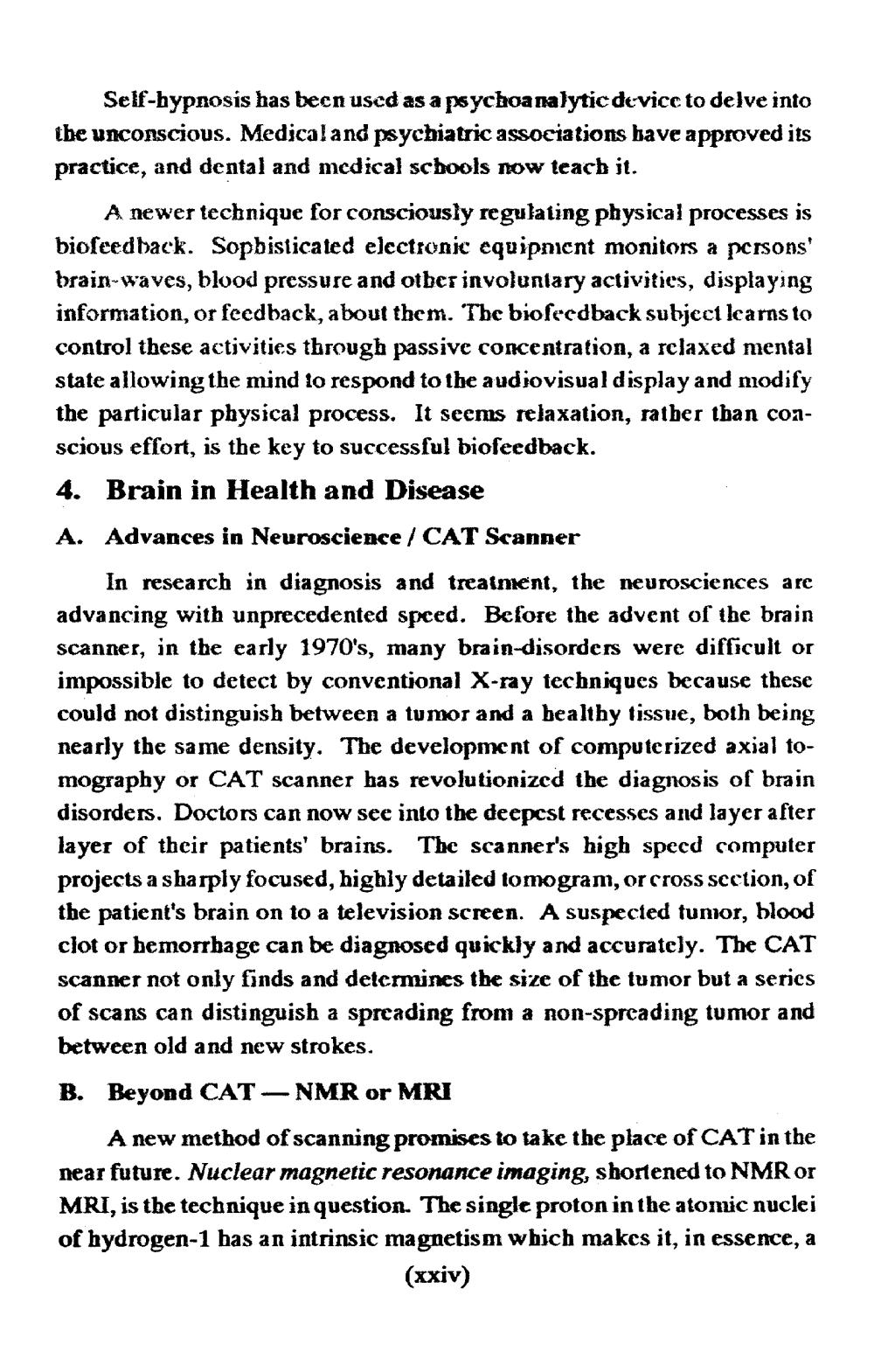________________
Self-hypnosis has been used as a psychoanalytic device to delve into the unconscious. Medicaland psychiatric associations bave approved its practice, and dental and medical scbools now teacbit.
A newer technique for consciously regulating physical processes is biofeedback. Sopbisticated electronic equipnicnt monitors a persons' brain-waves, blood pressure and other involuntary activities, displaying information, or feedback, about them. The biofeedback subjcct learns to control these activities through passive concentration, a relaxed mental state allowing the mind to respond to the audiovisual display and modify the particular physical process. It seems relaxation, rather than conscious effort, is the key to successful biofeedback. 4. Brain in Health and Disease A. Advances in Neuroscience / CAT Scanner
In research in diagnosis and treatment, the neurosciences are advancing with unprecedented speed. Before the advent of the brain scanner, in the early 1970's, many brain-disorders were difficult or impossible to detect by conventional X-ray techniques because these could not distinguish between a tumor and a healthy tissue, both being nearly the same density. The development of computerized axial tomography or CAT scanner has revolutionized the diagnosis of brain disorders. Doctors can now see into the deepest recesses and layer after layer of their patients' brains. The scanner's high speed computer projects a sharply focused, highly detailed tomogram, or cross section, of the patient's brain on to a television screen. A suspected tunior, blood clot or bemorrbage can be diagnosed quickly and accurately. The CAT scanner not only finds and determines the size of the tumor but a series of scans can distinguish a spreading from a non-spreading tumor and between old and new strokes. B. Beyond CAT — NMR or MRI
A new method of scanning promises to take the place of CAT in the near future. Nuclear magnetic resonance imaging, shortened to NMR or MRI, is the technique in question. The single proton in the atomic nuclei of hydrogen-1 has an intrinsic magnetism which makes it, in essence, a
(xxiv)




